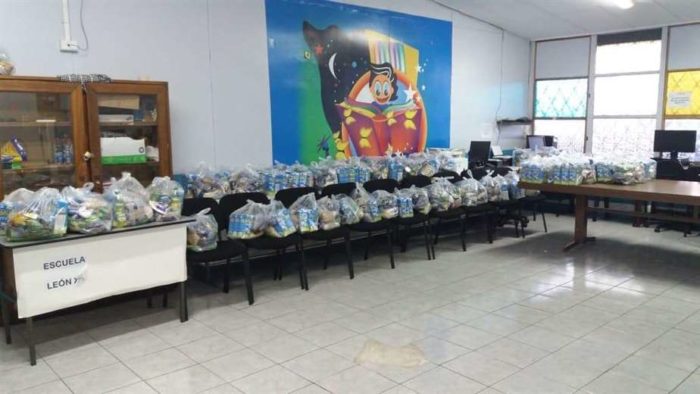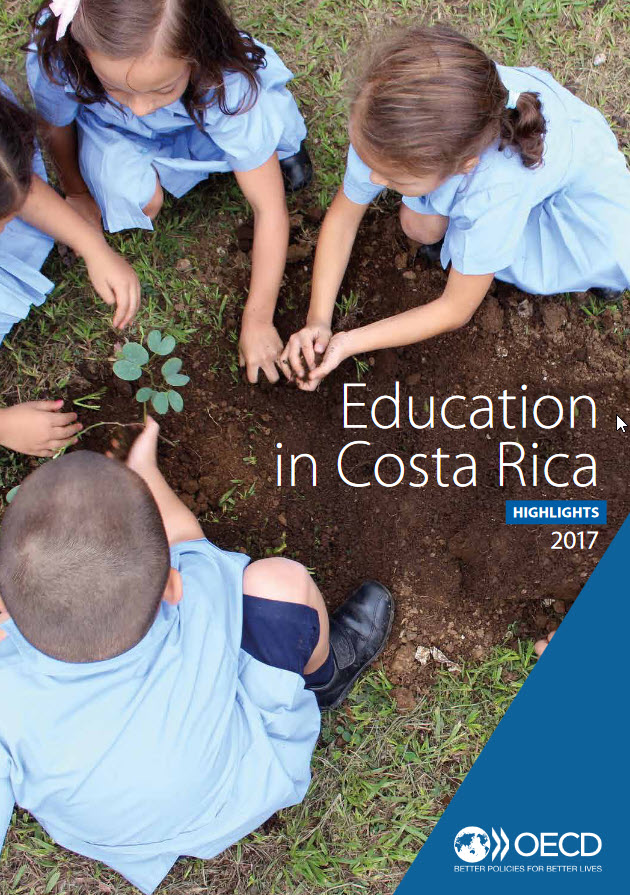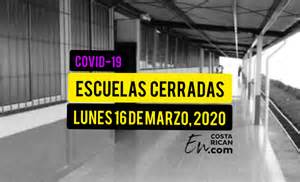‘What’s that huge queue for?’ I asked my friend. He simply shrugged his shoulders as we stared at the seemingly endless line of people, circling round the block. The streets were practically empty and unusually quiet, aside from this mammoth queue of women, all standing two metres apart. Then it clicked. This wasn’t a Covid-19 testing centre as I had originally thought. No, these people were queuing for food packages for their children, being distributed by a local school.
The queuing mothers seemed a little nervous but generally relaxed. After all, they have been some of the luckier ones in Central America, during the pandemic. Of course, schools are currently closed in Costa Rica, as in many other nations. This is, understandably, limiting how much children are really learning, as parents attempt to be home tutors and schools improvise with online learning resources. However, the government have largely been transparent, effective and empathetic in their actions. Unfortunately, the same cannot be said for other nations across Central America.
Costa Rica: A best case scenario
When Covid-19 cases started emerging in Costa Rica, the government were quick to close schools. In fact, despite the 2-3 week time lag between the emergence of the virus in the UK and Costa Rica, schools closed earlier in the tropical paradise than in Great Britain. As Ana Maria Roura notes, with only a dozen confirmed cases, the government were already working to promote social distancing and suspend face to face classes in Costa Rica.
Many schools and universities quickly moved to online learning. On my social feeds, I have seen Tico parents doing fun educational activities with their kids from home. To support socio-economically disadvantaged children in particular, when the classroom doors closed, the government initially left school dining rooms open. When dining rooms could no longer operate due to increased restrictions, schools still allowed parents of vulnerable children to pick up food packages intended to last for 22 days, in a bid to fend off extreme poverty. The Ministry for Education is evidently doing all it can to alleviate the gravest consequences of schools being closed for business indefinitely. But is it enough?

The majority of my interviewees feel satisfied with how the Ministry for Education and wider government have responded to the global pandemic. However, they, themselves have noted the difficulties of shifting to online learning at such short notice. Some expressed their concern at how this may impact their child’s learning and future prospects.
I spoke to a young mum who was suddenly expected to act as a home tutor when schools shut their doors, like many others. Now directly responsible for her young daughter’s primary education, she said: ‘It has been an interesting experience. We have had to give our all to turn ourselves into teachers, to educate our daughter in the best way possible’.
This has not come without its costs. When schools closed, my interviewee had no choice but to give up private English classes she had previously been taking in a bid to support her daughter’s language learning. With less time to study herself and only one appliance suitable for online learning in the house, she is doing all that she can to make this unforseen transition as smooth as possible for her child.
Although this transition to online learning has come with its challenges for her own household, my interviewee seemed more concered about those living in rural zones. She said: ‘Rural zones are the most affected. In these zones, they don’t have the means of technology to complete the tasks that the Ministry of Education are setting (online)’.

Although Costa Rica has a growing tech sector, (ranking sixth in Latin America for entrepreneurial activity according to the Global Entrepreneurship and Development Institute in 2019), the potential for edtech to thrive has not yet been unlocked rural areas. A university student who I spoke with had mixed feelings on the matter. Studying online for now, himself, he too shared a concern for rural education during the pandemic: ‘Rural zones don’t have optimum access to technology to be able to follow the rhythm of classes online’.
A former colleague and ESL teacher echoed this concern, stating that: ‘Some students don’t have the greatest internet and that really impacts. I had a few drop out simply because their connection was in and out during the whole class and you can’t learn a language only hearing 50% snippets’. He added that his remaining students could not wait to get back into the classroom.
In Costa Rica, poverty tends to be highly concentrated in rural areas. Accordingly, the OECD states that, students from poorer homes tend to fall two years behind their wealthier counterparts by the end of basic education. That statistic was reported in 2017. With the technology necessary for online learning hard to come by in rural zones, educational disparities between those in rural and urban neighbourhoods will now likely increase, in terms of attendance, attainment and personal development.
The OECD has stressed the need for an improvement in basic education for rural zones, with more equitable and adequate funding for under-served areas. Indeed, some Ticos feel certain that the pandemic is making authorities realise that investing in in technology for education will be the way forward. One of my interviewees was sure of this: ‘Technology and associated infrastructure designed to help the education sector will be developed to face the pandemic and its consequences’. However, the question is when and how this could work to reduce educational disparities between children from rural and urban zones.
Nicaragua: Schools Stay Open, Students Stay Home?
Nicaragua’s response to Covid-19 has been in stark contrast to its neighbour, Costa Rica. It’s business as usual under a government who have dismissed many suspected COVID cases and deaths as ‘atypical pneumonia’. Citizens have blindly been encouraged to attend mass public gatherings, parties and festivals, a move condemned by Human Rights Watch. Unsurprisingly, schools have stayed open, closing only for Easter break (aka ‘Semana Santa’). According to UNESCO, Nicaragua is the only country in the whole of Latin America which has resisted closing schools.
But is keeping classrooms open during the pandemic of a benefit to Nicaragua’s children? This seems unlikely. If we consider student/teacher health alone, Mario Medrano for CNN reported that over 1.5 million pupils at both primary and secondary levels are being highly exposed to catching the virus, due to insufficent hygiene conditions in public schools. Many schools do not even possess the facilities for children to wash their hands adequately, making students and teachers highly susceptible to spreading the virus.
Indeed, I spoke with a young Nicaraguan who suggested that schools have remained open more due to the government’s ‘ignorance than anything else’. He added: ‘There are lots of children whose parents aren’t sending them to school. The government are launching campaigns in neighbourhoods to convince parents to take their kids to classes’.
By keeping schools open during the pandemic, the government appear to be driving inequality in an already largely inequitable education system. In 2018, UNESCO reported that 16 million girls in Nicaragua would never attend school, largely due to social attitudes, poverty and living in isolated neighbourhoods.
Current educational disparities tend to be based on gender, socio-economic background and where one lives. I expect that the pandemic will widen and worsen these already dangerous gaps. Online learning appears to be unheard of (many homes do not have internet) and teachers are pushing on with covering the syllabus at a standard pace, meaning that many more students are missing out today.
How are children staying home expected to keep up with their peers attending class? Is it really a choice between missing out on one’s education or losing one’s life? Many parents believe this to be the case. A concerned mother shared with BBC Mundo that she was keeping her 13 year old son at home. ‘I prefer that he loses a year (of his education) and not his life’, she explained. She, too, called the government ‘irresponsible’, a sentiment shared by many Nicaraguans.
It seems like, in spite of these growing inequities, the government will do little to modernise education in line with changing needs. ‘How public schools teach is exactly the same as over 30 years ago’, shared an interviewee. He expressed how the country requires a substantial project to improve education for all post-pandemic.
A Tale of Two Neighbours
It is clear that Costa Rica and Nicaragua have responded in completely paradoxical ways to the outbreak of Covid-19. However, both will see increasing disparities (albeit of differing magnitudes) in their respective education systems, for the short term at least. Nicaragua’s situation seems to be more severe than that of its neighbour. Nonetheless, post-pandemic, both nations must find a way to support and facilitate the learning of those who will have inevitably fallen behind.
Katie Jones lived and worked in Mexico as an English teacher in the state of Puebla. Until the Covid-19 pandemic took hold, she was teaching in Costa Rica and was an active member of a local NGO aiming to assist the quality of education for children in an underprivileged barrio. She is the Ambassador for Education for Central America and Mexico for the International Fellowship of Rotarian Educators.

